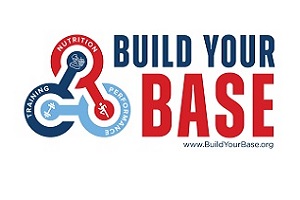THE GREATEST RACE…EVER!
As one of the Meet Directors of what has become the NIKE INDOOR NATIONALS, I am often asked what was the greatest race I've ever seen at the indoor meet. (I'll talk about the outdoor event at a later date.) This is a tougher question than one might think. For example, how does one define "race?" Will the "greatest" be defined as the closest finish? How about the participants involved? Does a solo effort count? Should relays be considered? Does the term "race" include field events? Perhaps the headline should read "…PERFORMANCE…" rather than race. But, the question always revolves around the word "race." So, I'll attempt to answer that one.
Another problem, how does one define the word "great?" Should an awesome finish in a race other than a final be considered? Is barely qualifying for the final by .001 to be considered "great?" What about a spectacular finish in a so-called 'slow' heat? Or do we confine our efforts to only finals? I hope you see my problem. Let me tell you my solutions and why.
In my mind, the "greatest race…ever" must meet certain qualification. First, it must be a finals competition. Why? Pressure. There is no race, whatever the status…Olympic Games, World Champs, National Champs, what have you…the greatest pressure comes when you toe the mark for the finals.
Secondly, for a 'great' race you need 'great' participants. In some of the meets I've helped administer, there were finals featuring…nobody. Good kids, solid competitors but no zing, no excitement, basically, just another race.
Thirdly, excitement. A 'great' race has the crowd buzzing, people sitting on the edge of their seats ready to spring to their feet the instant the gun sounds. Arguments as to who is the better racer? In some cases, arguments backed up by cash, considerable amounts of cash. But we won't go there.
Fourthly, implications. By that I mean, did the race mean anything? A new record? A personal best? A significant decision as to who of the participants may now be considered the best.
To my way of thinking, the 'greatest' race must have similar participants. The contestants must be of national import, national stature; they must be somebody special, those of a higher level. But enough of these qualifications. Let's cut to the chase! I'm going to choose one race from each sex. This story takes me back to 1984, the first year of our meet. We – Jim Spier, Tracy Sundlun and I – were almost trembling with excitement and anticipation. What kind of a meet would we have? Would we even have a 'great' race? If so, it wouldn't come from the hurdlers. Why not? On the Boys side there weren't any! I had to go out to the line of athletes, coaches and spectators and ask, "Are there any hurdlers here who haven't entered?" Several hands went up and they were in the final! Ugh! What a great start.
Going back to 1984 means having to evaluate over 700!! Races! Here goes…A NEW NATIONAL RECORD!!! In our first meet! WOW! It couldn't get any better. Backs were pounded, high fives given, smiles on every face…then, a red flag. An official came striding towards us. "She went out of her lane and will be DQ'ed." THIS COULDN'T BE! Sundlun and I fought like caged tigers over a juicy roast beef…to no avail. The record was gone. WENDY VEREEN wouldn't make it into the record books and our new meet would have to wait for national recognition.
That's right, recognition. Track & Field News made no mention of it nor did Jack Shepard in his high school annual. The meet itself was too new and hadn't offered any great performances despite the presence of some of the finest athletes in the country. Who was there? LISA BERNHAGEN, 6-3 (USL) — won the HJ, 6-0; LESLIE MAXIE, who went on to make the Olympic team, set a hsr in the 400mH and be the AOY in '84 — won 440y, 55.21; ARNOLD CAMPBELL, won the shot put, 70-11.5 ; DOTHEL EDWARDS, 7-04.5 and later, 7-06, - won he HJ, 7-02; also a hsr at the time; CHARLES SMITH, 26' lj'er, who needed a translator due to his being hearing impaired. He had a bad day finishing 4th in the long jump, 22-0.75. Another name that went on to do OK, DENNIS MITCHELL, who won the event, 22-11.
But the presence of these great athletes and the stellar performances they turned in, established the meet as the finest indoor competition within the United States. From that point on, the meet grew steadily in both quality and quantity as the level of performance steadily increased as did the number of youngsters taking part.
1987, COXE CAGE, YALE UNIVERSITY, New Haven, Connecticut as the site of the greatest race I've had the pleasure of watching. At the time, Yale's 4-lane wooden track was the fastest indoor track in the East. But due to its size, we had to be run two heats for the final. That created an eight-person final but…it was the best we could do. Then, as now, the trials were run the day before the final with the eight fastest advancing. Due to rather limited funding, my task as the recruiter was to try and get the best kids in the country in every event. The 440 was my pride and joy. The #1 - #2 - #10 and #8 over 220yds showed up. But the #10 was a kid named TYRONE KEMP who was just coming into his own. But the race was heralded as a match race between the two best in the nation, junior and USL WILLIAM REED. The young Philadelphian came in with a 45.4 to his credit but we all knew he was FAR better than that! As a frosh, he'd made, just barely, the US team headed to the first World Junior Championships in Athens. "I had the chicken pox and was up all night before the race with hot flashes, cold sweats, it was bad," he recalled in a recent conversation. He finished sixth and made the team as an alternate for the 4x400m relay.
"Because I'd only finished sixth, the coaches were reluctant to put me on the team. But the Jamaican coach, Glen Mills, came to my rescue. He told the Head Coach, Ron Basil, 'If you leave Reed off the team you're going to finish third. Cuba will beat you and so will we.' That's how I made the team." (Ed. Note: Mills currently coaches another pretty good sprinter, one Usain Bolt.) The Cuban team would be anchored by ROBERTO HERNANDEZ, the 400m winner in 45.33. At the team meeting where the order would be set, well, let Reed tell it, "Nobody wanted to run against Hernandez. They asked me if I thought I could beat him, 'Absolutely!' there's no way he can beat me." This from a FRESHMAN in high school! Reed's split on his winning anchor, an astounding 44.32! The team set a World Junior record, 3:01.90 that lasted until another US squad posted a 3:01.09 in Grosetto in 2004. But I digress. Please excuse me for doing so but I wanted you to feel a sense of how awesome this field was.
STEVE LEWIS came in from California and was on the cusp of an absolutely great career. His 46.50 established him as a tremendous prospect. He came to Yale for the express purpose of challenging Reed. I recall speaking to him prior to the race and he felt very confident. He felt his speed would give him the lead (it did) and he could hold off any attack by Reed in the final stages.
In the trials, Reed lead, 49.04 with Lewis, 49.28 and Kemp, 49.60. The fourth spot for the fast heat we taken by AARON MERIWEATHER, a kid from Virginia. This was a surprise as we expected to see another West Coaster, MARTIN CANNADAY. But he eased up down the stretch and his 51.08 wasn't good enough.
The following day the packed house moved to the edge of their seats as the field took their places. Meriweather in Lane 1, Kemp, L2, Reed, L3 and Lewis on the outside. The first lap was run in lanes and at the break Lewis had a clear lead with Reed right there. "We expected Lewis to be in the lead and had trained for that type race so it was no surprise." Kemp and Meriweather were third and fourth respectively, where they would stay.
Going into the backstretch Reed made his move. "My coach (Arnie Shiffrin) told me to go with 150 yards left. He figured Lewis wouldn't expect that figuring I'd wait until the final straight." To us spectators it looked as if Lewis was slightly surprised and didn't react as quickly as he should. That was all Reed needed. But, Lewis never quit. He launched his attack coming off the final turn, closed briefly, but couldn't maintain his speed and the race was over. The crowd clustered around Reed. I went over to Lewis on his hands and knees gasping for breath. I distinctly recall putting my arm around him and saying "Great race, just great!" He, with difficulty responded, "I couldn't do any more I had nothing left."
Meantime, the announcer for ESPN, another name of which we are all aware, Carol Lewis 'interviewed' Reed. He laughingly recalls, "It was the strangest interview I ever had. She never asked me a question. She talked about what a great race it was, how she was so excited and that was it. I walked away puzzled."
Now, as TV pitchman Paul Harvey would say, "now for the rest of the story". What happened to these protagonists? They finished the year ranked 1-2-3 in the 400m. Reed, 45.17, Lewis, 45.76 and Kemp, 46.05. Meriweather also did well, 47.67, terrific for a kid from a small school in Petersburg, Virginia, just a few tenths behind another kid who made quite a name for himself, Quincy Watts. But the greatness we all expected, along with an unexpected tragedy, came the following year, 1988.
Jim Kemp won the NCAA 440yd indoor championships and went on to have a fabulous career. Runner-up Steve Lewis became the greatest 400m runner in the world set a World Junior record (43.87) and won the gold medal at the Olympic Games. Aaron Meriweather disappeared from the big time screen. What of William Reed?
During a spring meet Reed was in the blocks getting set for the 200m. "My blocks slipped and I felt something in my foot." That 'something' was a hairline fracture. Reed went to Europe to run but, "…I couldn't train; my foot was on fire. The coaches thought I was doggin' it but I ran all those meets on a broken foot!" It would have probably healed on its own with rest but Reed got a little frustrated and went for a practice run. "It was in Valley Green Park, I stepped on a rock and…" The hairline fracture became a full-fledged break. The left metatarsal cracked and, for all intents and purposes, the career of perhaps the greatest 400m talent in history came to a virtual close. Reed never ran a race during his senior year. (Ed. Note: The three greatest 400 runners in high school history, Reed, Obea Moore and Henry Thomas never ran in their senior years in high school. In a future piece I'll delve into why Reed never ran in college. Keep an eye out for that story.)
What about the Girls? What was the greatest race I ever witnessed? Well, it has none of the drama of the 400m previously mentioned nor any of the wonderful aftermath as just presented. But, that's not the point of this piece. To my mind, the greatest race ever was by a rather shy, smallish youngster from Boulder, Colorado, MELANIE FAIRCHILD.
It's 1991 and the meet has left the cozy confines of the Coxe Cage in Yale and moved to the huge 8-lane indoor facility at Syracuse University. It was a good year athlete wise with people like AOY Zundra Feagan, Marion Jones, (they traded wins, Feagan in the 55, 6.85 to Jones'6.91 and the Californian 23.89 to 24.03; Becky Spies and Nicole Trotter over 800m; Dawn Burrell, Sarah Schwald and Juliana Yendork, who set a national record in the triple jump, 43-11. But the drama, unnoticed by the crowd, centered on the young woman from Boulder. The night before her race, she and her coach (whose name escapes me) were sitting at a table in the lobby of the old Syracuse Hotel. The hotel warrants a story in itself but that's for another time. Suffice it to say, the movie 'The Shining' (redrum, redrum, redrum and "Here's Johnny") could have been filmed there. As I walked past the coach called me over. "We need some advice," he began. What he said next stunned me. "We want to break 10:00 tomorrow." I looked at him as if he were crazed. No one had ever done that. The closest had been Erin Keogh's 10:01.33 in 1987 and Suzie Tuffey's 10:05.1 two years earlier. Even the great Lynn Jenning's hadn't come close, her 10:10.5 in 1978 being the record until Tuffey and Keogh came along.
Fairchild was not unknown. Her third place finish at the World Junior Cross Country Championships is still the best finish by an American and she said, "If I'd known they were in front of me, I could have won." The two in front? Two Kenyans who blasted out across a field and into the woods and never seen again until 300m from the finish by Fairchild. Interestingly, Fairchild was the first athlete the NSSF ever funded to a meet, having provided her with financial assistance to get to the TAC cross country trials. But that effort, despite its greatness gave no indication of the ability run under 10:00. But, I felt I should offer some advice. "Get out fast, lap the field as quickly as possible and then speed up every time you relap someone. You can never rest if you want to go under 10:00." They thanked me and I left.
The next day she did exactly that. As I recall her splits en route were 5:00 and 4:55.92. Of course, her 9:55.92 set a record that still exists and her 9:17.7 split at the 3000m was also a new mark that also is till on the books. I was standing midway through the final turn. Her effort was so emotionally amazing to me and the tears rolled down my cheeks. I knew I was witnessing greatness and my tears were ones of joy for a great athlete performing to the uttermost of her ability. To this day I've never seen anything that even remotely resembles that performance.
Many of you will certainly have different recollections of the greatest you've ever seen and that's good. Maybe we can sit down over a big orange and argue the merits of those recollections. I hope so. See you then. -- mb




